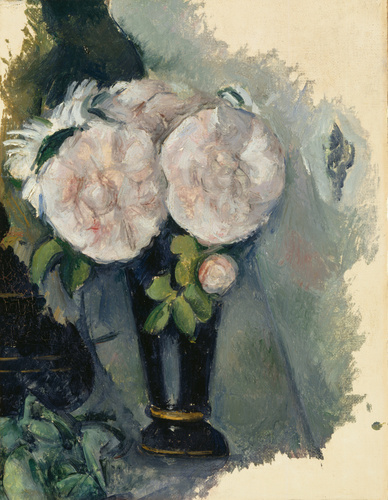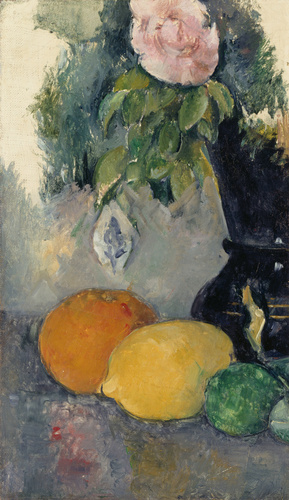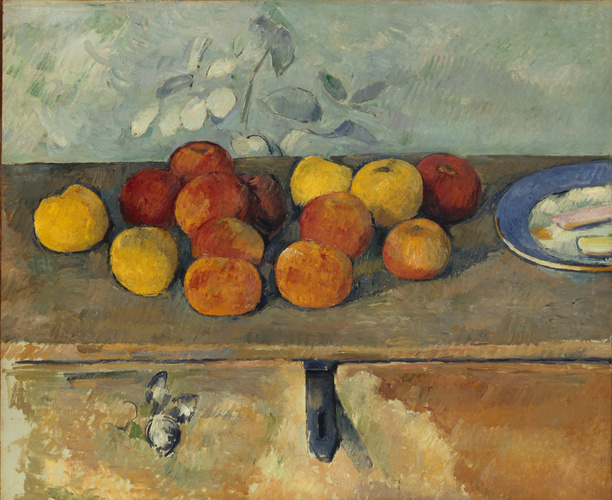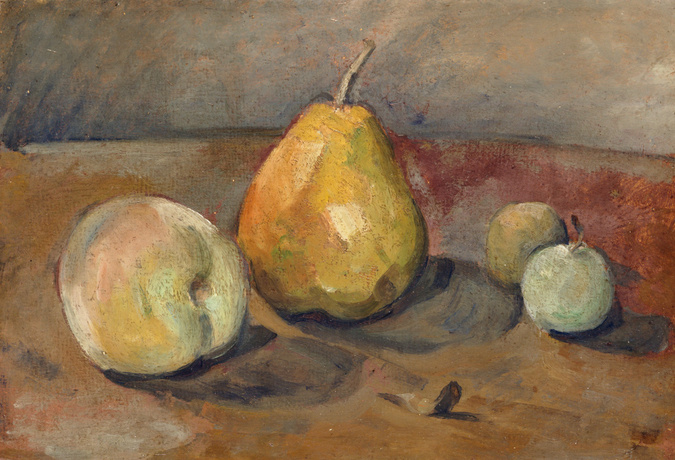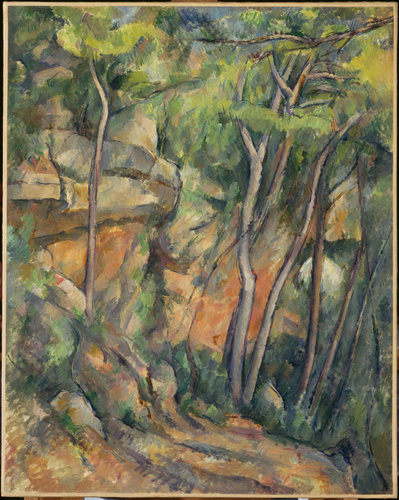La Barque et les baigneurs
This painting by Cézanne only came together as a whole quite late, in 1973, after having been cut up into three parts for several decades. Two of the sections had been given to the State by Domenica, the widow of the dealer and collector Paul Guillaume. The national museums had the chance to purchase the missing central part in 1973, and the work was put back together. The unusual format of the composition, long and narrow, can be explained by the painting’s intended destination. It was, in fact, a decorative project to be placed in the Parisian apartment of Victor Chocquet, a leading collector, who commissioned it. It should have been placed there with its pendant La vasque au paon [The Fountain] (private collection) above a door. However, according to Georges Rivière, when Chocquet died in 1891, the two panels were still unfinished. We can see here the classical theme of bathers that runs through all of Cèzanne’s work. Here, they are spread out along the banks on either side of the river, leaving the space between to water and sky, with a small boat moored on the left and a large boat sailing gently in the centre of the composition. The painting expresses the harmony that exists between man and nature. Apart from some murals of the “Seasons” that Cézanne produced when he was young, in the family home in Jas de Bouffan, near Aix-en-Provence, this work is a one-off, since it is the only commissioned decorative project Cézanne ever produced.



